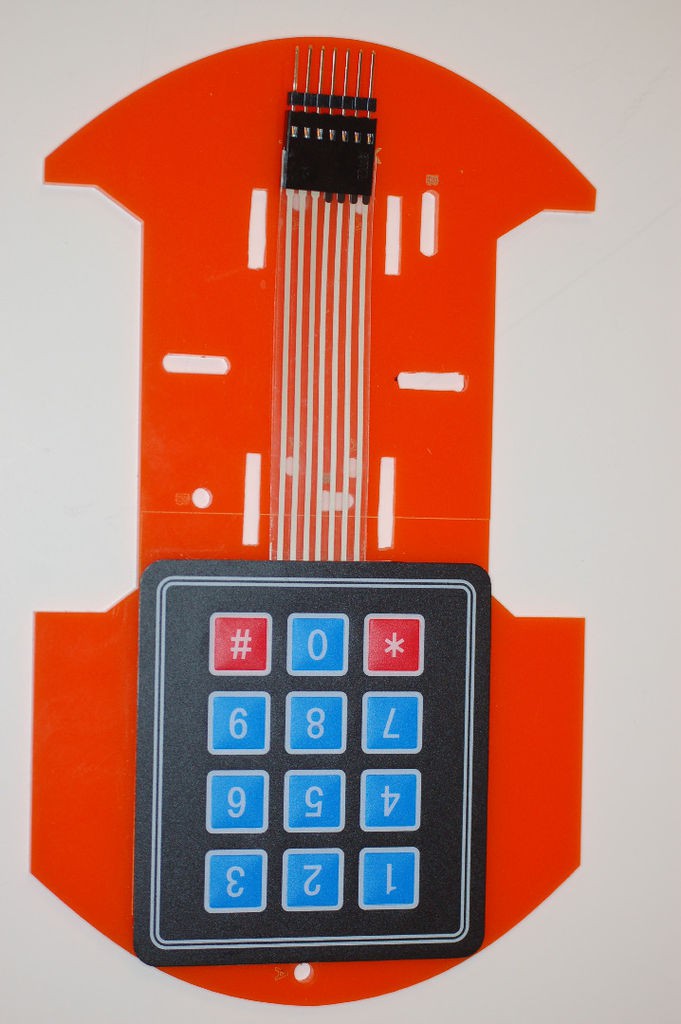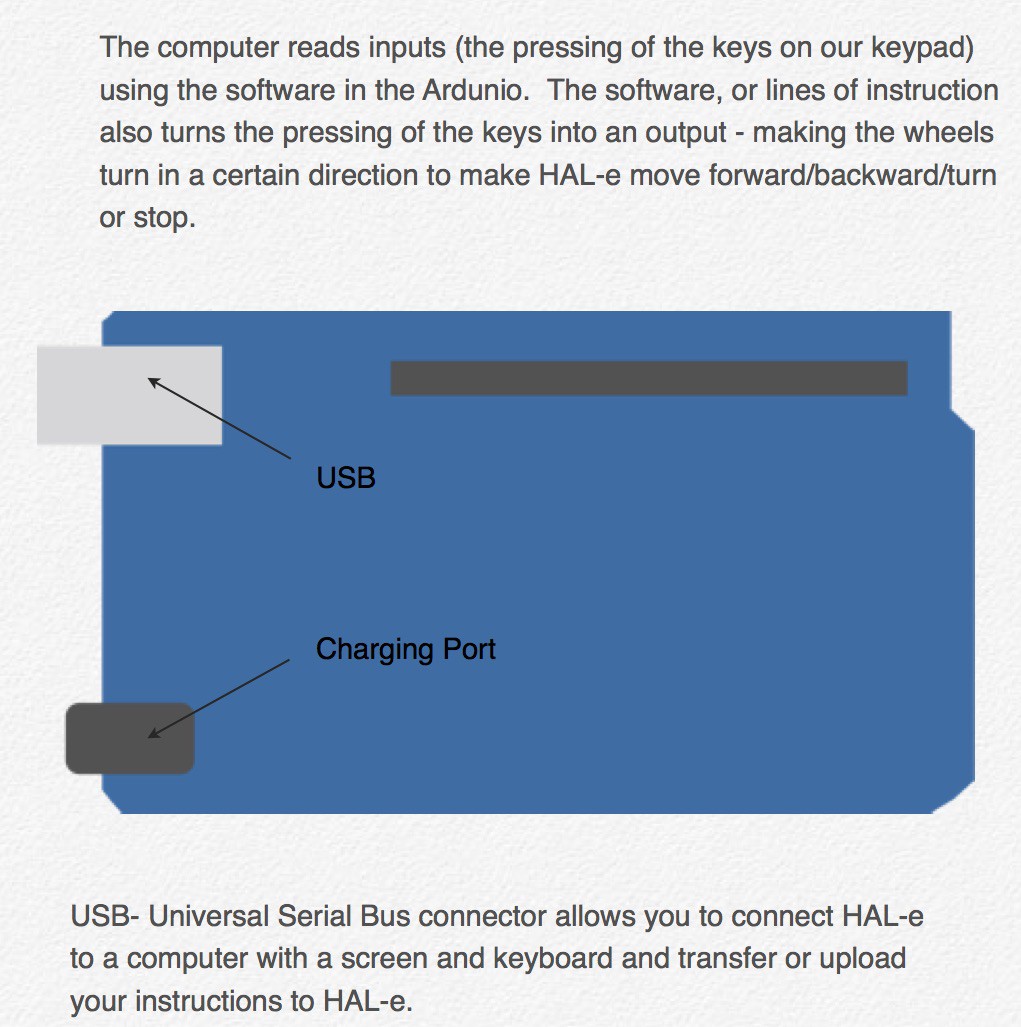HAL-e Robot Kit for Kids
A kit that demystifies robots for children using first assembly, then sequential programming.
A kit that demystifies robots for children using first assembly, then sequential programming.
To make the experience fit your profile, pick a username and tell us what interests you.
We found and based on your interests.
The kids who had tested HAL-e’s earlier iteration were often frustrated by the chassis having so many extra holes. Indeed, most robot chassis we looked were designed for many different robot designs at once. When we designed our own chassis, we made sure to have minimum number of holes and clear labels in order to lessen the confusion. A main goal of this project is to minimize frustration by keeping the robot at an elementary school, not electrical engineer level.

I'mgaining a greater appreciation for my teachers and all educators in general as we try to write this lesson guide. Trying to explain how an Arduino works in words in a way that elementary schoolers would understand is way harder than it seems. Even the design of the guide itself is difficult. Meg is doing a great job designing the icons for each of the components.

But its slow-going, given the time it takes for her to choose what details to include in the drawings and what not to. I’m learning that complexity is difficult to capture in words and in pictures alike, but simplifying that complexity down without losing the educational value is way harder.
HAL-e doesn’t always go in perfectly straight lines. She’s still usable, but we’d like to improve her further. We’ve started another prototype, using paper caps on the wheel and new sensors. Aesthetically, it’s definitely going to be much less nice looking than the original design, thanks to the wires sticking out.
Additionally, the construction might be out of reach for elementary schoolers given the extra wires. I’ll keep on working on it, but I doubt that having HAL-e move in a perfectly straight line will be worth the trade-offs.
Part of building the kits before we give them to the kids is soldering the two electronic components. Ideally we wouldn’t have to do this ourselves, but we can’t find a motor driver combined with an Arduino online, and its too expensive to pay for them to be made. Luckily, I've been soldering since I was 7. Plus, unlike Kat, I don't have the propensity to burn myself using the wire. I keep telling her to forget her dinner manners and keeping her elbows down on the table while she's soldering. It would help keep her hands from shaking, but she doesn't always do it.
Looking ahead, we'll need to get a process worked out to solder HAL-e quickly and effectively, without ruining any electronics in the process.
Create an account to leave a comment. Already have an account? Log In.
Become a member to follow this project and never miss any updates